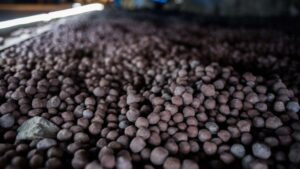
Mining company Ferrexpo with assets in Ukraine, after suspending production since early October at its facilities in the Poltava region due to restrictions on electricity supply due to the shelling of the energy infrastructure by the Russian occupiers, is resuming operations of one pellet production line.
“After suspending its operations in October 2022, the group is now receiving enough electricity to restart one pellet production line. This will allow the group, along with its existing stockpiled products, to fulfill existing contracts with customers,” the company stated in a stock exchange statement Wednesday.
It explains that the company produced about 0.3 million tons of pellets in October-November as a result of disruptions and continued volatility in power supply in the fourth quarter of 2022. Overall pellet production in 2022 is expected to be about 5.9 to 6 million tons (down almost half by 2021 – IF-U).
“Despite the group’s production disruptions, shipments to customers in the fourth quarter of 2022 continued at about 250,000 tons per month,” the press release noted.
As reported, pellet production for the first nine months of 2022 was 5.637 million tons, down 31% from the same period last year.
Ferrexpo in 2021 increased total pellet production by 0.02% over 2020 to 11.220 million tons. The company also produced 234,000 tons of saleable concentrate with 67% iron content (up 28%) in 2021.
Poltava GOK has four pellet production lines.
Ferrexpo is an iron ore company with assets in Ukraine.
Ferrexpo owns 100% of LLC “Yeristovsky GOK” and 99.9% of LLC “Belanovsky GOK”. Before the September 2022 court ruling, Ferrexpo also owned 100% of Poltava GOK PJSC.
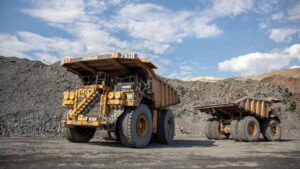
Mining company Ferrexpo plc with assets in Ukraine published its debut climate change report and announced an updated carbon reduction target of 50% by 2030 for Group 1 and 2 emissions.
The company recalled that it had previously pledged to reduce these emissions (Group 1 emissions from its own operations, mainly from combustion of fuel and gas, and Group 2 emissions from purchased electricity, steam, and heat) by 30% by 2030, but had already achieved this goal.
As the report specifies, in 2021, Group 1 emissions increased by 11% (hereafter per ton of production), while Group 2 emissions decreased by 40%, and overall emissions decreased by 16%.
Since baseline 2019, Group 1 emissions have fallen 1% and Group 2 emissions have fallen 54%, for a total drop of 30%.
Ferrexpo points out that diesel fuel accounted for 40% of Group 1 emissions in 2021, which could be reduced by the introduction of battery electric dump trucks as well as the use of trolley technology on uphill runs.
The company noted that it achieved significant reductions in Group 2 emissions last year by replacing 18% of natural gas in pelletizers with biofuels (sunflower husks), building a trial 5 MW solar power plant and a strategy of selective green power purchases.
In addition, in the climate change report, Ferrexpo also presented new emission reduction targets for Group 3 (third-party transport for product delivery and use in metallurgy) – 10% by 2030 and 50% by 2050.
The company indicates that the main reductions in this category could be achieved by switching to metallized (DR) pellets for direct reduction of iron, which uses electric arc furnace steelmaking methods without coal.
In absolute terms, according to the report, the goal is to reduce CO2 emissions of all three groups from 2.2 million tons in 2019 to 1.6 million tons in 2025 and 2030, 1 million tons in 2035, 0.5 million tons in 2040 and 0.2 million tons in 2050.
Translated into a ton of production, this would correspond to a reduction in emissions from 205 kg in 2019 to 107 kg in 2025, 68 kg in 2030, 44 kg in 2035, 22 kg in 2040 and 8 kg in 2050.
In the climate change report, Ferrexpo detailed a number of climate change risks and opportunities related to its business, particularly related to the introduction of CBAM, and a potential decarbonization pathway to achieve net zero iron ore pellet production by 2050.
“Our first climate change report is the culmination of an initial phase of work detailing climate change topics, such as risks and opportunities associated with climate change, as well as a special study of a potential decarbonization path for the group: achieving net zero production through 2050,” Ferrexpo CEO Jim North is quoted in the document.
As reported, in October 2021, Ferrexpo began working with Ricardo plc (Britain), which helped prepare this report, as part of its decarbonization plans.
Ferrеxpo owns 100% of Poltava GOK, 100% of Yeristovsky GOK and 99.9% of Belanovsky GOK. Last year, the company produced 11.2 million tons of pellets, becoming the world’s third largest exporter.
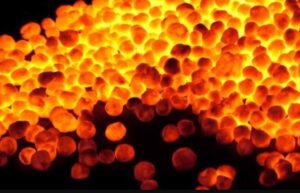
The UK-based Ferrexpo Plc, which controls Poltava Mining and Yeristovo Mining in Ukraine, intends to reconstruct the integral property complex of the pellet production shop at Poltava Mining.
According to the documentation at the disposal of Interfax-Ukraine, it is planned to reconstruct the integral property complex of the pellet production shop in the building of the filtration and averaging building for concentrate No. 1, A and 2, B.
The timing of the reconstruction and the amount of funds for the project are not made public.
Ferrexpo is an iron ore company with assets in Ukraine. Fevamotinico S.a.r.l., controlled by Kostiantyn Zhevaho, owns 50% of Ferrexpo, BlackRock holds 6.74% in it.
Ferrexpo owns 100% of the shares of Poltava Mining, 100% of Yeristovo Mining and 99.9% of Belanovo Mining.
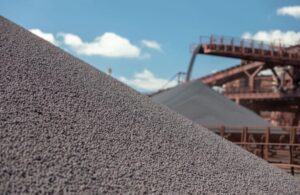
British Ferrexpo plc, which controls in Ukraine, in particular, Poltava and Yeristovo mining and processing plants, reduced production of pellets by 14% in January-June 2022 compared to the same period last year, to 4.797 million tonnes.
According to the company’s press release on Thursday, pellet production in the second quarter of this year decreased by 23% compared to the first quarter, and by 27% by April-June 2021, to 2.085 million tonnes.
In the first half of 2022, production of premium pellets with an iron content of 65% amounted to 4.707 million tonnes (a decrease of 13%), including in the second quarter – 1.994 million tonnes (a decrease of 26% compared to the previous quarter and 28% compared to the same period last of the year). Output of direct reduced iron pellets (DRI, 67% of iron) in January-June amounted to 90,000 tonnes (an increase of 33% compared to six months of 2021), which were produced in the second quarter of this year, while they were not produced in the first one.
Pellets with an iron content of 62% were not produced in January-June of the current year.
At the same time, total production of marketable products (pellets and iron ore concentrate) over six months of 2022 decreased by 16%, to 4.816 million tonnes, in the second quarter compared to the first one – by 22%, and versus April-June 2021 – by 28%, to 2.103 million tonnes. In particular, output of commercial concentrate over six months of 2022 decreased by 88%, to 19,000 tonnes, the entire volume was produced in the second quarter, while there was no output in January-March.
The company explains the decline in pellet production by the ongoing war of the Russian Federation in Ukraine and the associated logistical restrictions. The Group continues to operate one to three of its pelletizing lines, reflecting the availability of logistics in Ukraine.
Sales in the first half of 2022 were 4.4 million tonnes, a decrease of 21% year-on-year and reflecting logistical constraints. At the same time, the group is negotiating with a number of logistics providers to resume access to maritime markets through neighboring countries.
Jim North, Chief Executive Officer of Ferrexpo, noted in his comment that the company continues to work and adapt its business in Ukraine as new risks emerge.
“We also continue to be impressed by the remarkable resilience of the people of Ukraine, despite the continual bombardment over the last four months. Our production result in the second quarter of 2022 reflects the determination of our people, our suppliers and our customers… In terms of logistics availability, which remains the largest constraint on our business at the present time, we are advancing efforts to increase seaborne exports and have made initial deliveries to customers,” he said.
Ferrexpo is an iron ore company with assets in Ukraine.
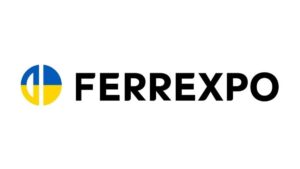
British Ferrexpo plc, which controls in Ukraine, in particular, Poltava and Yeristovo mining and processing plants, increased capital investments by 75.2% in 2021 compared to 2020, to $361 million from $206 million.
According to an annual report released by the company on Tuesday, in 2021, the capital investment per tonne of produced products was $160/tonne, while in 2020 this figure was $109/tonne.
At the same time, it is specified that last year, following the projects to increase the capacity of the processing plant (in 2020), the company began to modernize and increase the capacity of its granulator (pelletizer).
Of the $361 million, maintenance and capital expenditures for modernization totaled $113 million in 2021 (2020 – $103 million), including investments in all of Ferrexpo’s core business units. At the same time, investments were directed to the group’s concentrator and granulator, including an increase in capacity – the costs amounted to $111 million (in 2020 – $34.3 million). In addition, Poltava Mining has invested $34 million in a press filtration plant, which is scheduled for completion in 2022.
Additional capex areas are stripping for $69 million in 2021 (2020 – $14 million) and $6 million invested in infrastructure, development and exploration of the Belanovo field (Belanovo Mining), Haleschynske and Pivnichne fields (2020 – $6 million).
In addition, 2022 marks the 15th anniversary of the listing on the London Stock Exchange. During this time, the company has invested more than $3 billion in production, becoming the world’s third largest exporter of iron ore pellets, and is also starting to supply products with a higher iron content (67% Fe) to global markets.
The Group continues to invest and develop its assets, the report states.
After the completion of the initial upgrade of the pelletizing lines, it is planned to enter the next phase of growth, which will increase production of pellets by 3 million tonnes over the next three years. In October 2021, a decision was approved to focus on ore processing and high iron product operations while maximizing production and customer satisfaction.
At the same time, the company intends in the future to increase the total volume of ore production from 125 million tonnes in 2020 to about 265 million tonnes, spending $180 million on this. It is planned to invest $240 million to increase the capacity of crushing equipment and beneficiation to more than 45 million tonnes – contracts have already been signed with Metso and Weir Minerals.
In addition, to increase the capacity of one granulator line (out of four) by 3 million tonnes, investments will amount to $181 million.
It is planned to spend $28 million to solve logistics issues for transporting additional 3 million tonnes of pellets, which will require increasing the capacity of its port and purchasing additional wagons.
At the same time, the report states that investments to increase production by about 25% of existing capacities have been temporarily suspended by the group due to the war in Ukraine, but projects will be resumed after the situation in the country is clarified.
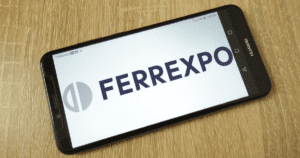
Mining company Ferrexpo with assets in Ukraine in 2021 increased its net profit by 37.1%, to $870.99 million, with revenue growth of 48.1%, to $2 billion 518.23 million, according to the company’s report on the London Stock Exchange in Friday.
According to it, EBITDA profit increased by 67.5% to $1 billion 438.76 million.
The report also notes that the company’s gross debt fell from $266 million to $50 million last year, while its net cash position increased from $4 million to $117 million.
Ferrexpo says its manufacturing assets were not affected by the hostilities after Feb. 24, but shipping has been halted since Feb. 25, with only shipments to Europe currently taking place.
Commenting on the impact of the war on operations and financials, Ferrexpo says it has adjusted its long-term model to reflect lower sales volume caused by a lack of offshore sales to its customers. The expected lower sales volume will have a negative impact on cash flow generation, which in turn will negatively affect the carrying value of the group’s non-current assets in future periods. However, Ferrexpo has so far refrained from making any assessments.
At the same time, Ferrexpo said it had prepared stress tests with more severe adverse changes such as a 3, 6 and 18 month production halt. Under these stress testing scenarios, the impairment loss could increase to between $320 million and $400 million, again depending on circumstances and macroeconomic data that would only be known to the Group at the time of preparation of the interim condensed consolidated financial statements for the six months ended 30 June 2022.